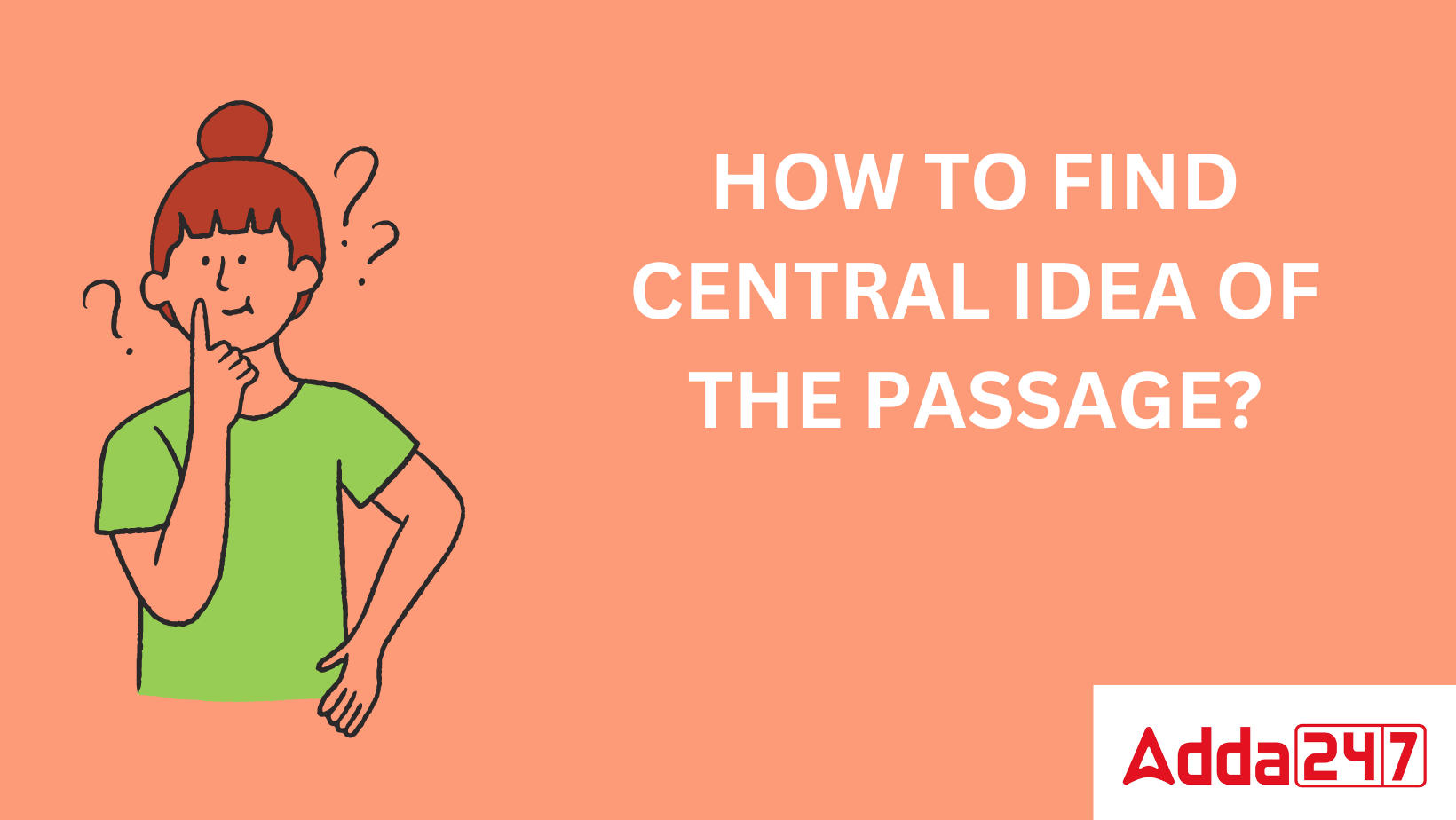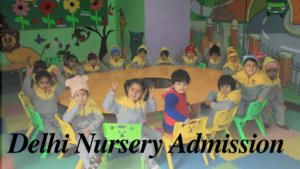Table of Contents
Central Idea Meaning
Central Idea of Poem/Passage: While doing reading comprehension passages you will be asked to choose the statement that best captures the central idea, major idea, or primary point of the passage as a whole. These questions come in a number of various forms, but they are all focused on the passage’s major topic or theme.
Central Idea of the Poem
The central idea that the author wants to draw the readers’ attention to is frequently the main idea. For example, I might use a sizable amount of material when writing a chapter to demonstrate that India is not a developed nation. In this example, the author wishes to make the case that India is not a developed country, even though the chapter is lengthy. The author just writes a passage with the main concept in mind. The passage’s core theme may occasionally become clear in a particular section, but this is rare. Therefore, the candidate must evaluate the possibilities and choose which one is best rather than trying to discover the answer immediately.
What is the Central Idea of the Poem
According to English expert the answer of What is the Central Idea of the Poem is given below.
The central idea of a poem can vary greatly depending on the specific poem and its themes. Poems are a form of artistic expression, and their central ideas can encompass a wide range of emotions, thoughts, and messages. To determine the central idea of a poem, it’s essential to consider the poem’s content, imagery, tone, and literary devices used by the poet.
What is the Central Topic of the Poem?
To provide a more accurate analysis, it would be helpful to know the title and text of the poem you are inquiring about. If you have a particular poem in mind, please provide more information, and I’d be happy to help you identify its central idea.
How to Write the Central Idea of the Poem?
You must be able to determine what the passage’s major concept is in order to correctly respond to the main idea questions. In my live classes, I ask the student to identify the proper noun that appears in the text the most frequently. The major idea of the passage is typically about the most frequently appearing proper noun, which also happens to be the subject matter of the passage. You need to consider the passage’s theme and the exact message the author is attempting to convey.
An essential fact regarding a major concept or main point question is that the response that best reflects a genuine statement made in the passage is not always the correct one. For starters, the response option might also make an untrue statement about the passage, in which case it cannot be interpreted as accurately conveying the passage’s major point as a whole. On the other hand, an answer option might even be entirely right in what it says about something said in the passage, but it might be about something that is only a side point and not a major point.
It is also important to keep in mind that there are various ways to communicate a passage’s key idea; as a result, you might not discover an answer choice that accurately captures it. However, if you understand the paragraph well, the proper solution should be closer to your interpretation than the others.
Central Idea of The Poem Class 11- Video Explanation
Watch the video to understand in better way to find central idea of the poem for class 11 Students.
Strategy to identify What is the Main Idea of the Poem
- Determine the passage’s topic and check to see if it appears in the answer choices (implicitly or explicitly), much like you would for a “main idea” question. This is the basic idea on which the text is based.
- Pay close attention to the main points only. Details don’t matter in this case. Don’t get focused on the full details. Despite being plainly stated, they fail to capture the passage’s essential point or topic. The solution cannot be formed from a single point, therefore always keep the big picture in mind.
- Students frequently make mistakes like this the title is not intended to make recommendations for further action or to draw conclusions; rather, it is meant to summarise the thoughts and points made in the passage. One key piece of advice is, to sum up each paragraph individually. Consider the primary idea question as a journey where you must arrive at your destination. How do you do that? You proceed step by step, pausing at key intersections. Take in the material one paragraph at a time, sum it up, and create an outline of how the piece flows in your head. Once you have determined how the text flows, try to summarise the main concept that the author is trying to convey.
- Improving your vocabulary will make it easier for you to recognize the central idea of the given passage, even if it isn’t explicitly mentioned. In addition, this serves as a long-term strategy for improving your language abilities. Make careful to learn 10–20 new terms per day and to review them often (use flashcards, mobile apps, books like Word power made easy by Norman Lewis etc.).
- Last but not the least, develop a routine of everyday reading. It helps you in many ways, such as increasing your focus and vocabulary, and this makes it easier for you to recognize the main idea than a non-reader. Reading in this context refers to reading quality content, such as editorials from The Hindu and other respectable newspapers, articles from publications like Reader’s Digest, journals and their websites, novels, etc.
what is the central idea of the passage?
Students should first decide the topic of the text in order to effectively identify the main idea. They must next determine what the author wants us to comprehend about that subject. The key to identifying the core idea is to do it in this manner.
The core meaning may not always be obvious, and students may need to put in extra effort to determine exactly what the text indicates. Every paragraph will contain the core idea, whether it is stated explicitly or implicitly. Students should be aware that it may appear at the start, middle, finish, or even scattered throughout the paragraph.
Dust of Snow Central Idea
“Dust of Snow” is a short poem by Robert Frost that conveys the central idea of how even small, seemingly insignificant moments or events can have a profound impact on a person’s mood and perspective.
In the poem, the speaker is walking in a snowy woods when a crow shakes off snow from a hemlock tree, causing a “dust of snow” to fall on the speaker. This middelseemingly trivial incident unexpectedly lifts the speaker’s spirits and changes their outlook. The “dust of snow” serves as a metaphor for a small, cleansing moment of joy or inspiration amidst the drudgery or melancholy of everyday life.
The central idea of the poem is encapsulated in the transformative power of nature’s beauty and simplicity. It highlights how moments of unexpected beauty or serendipity, no matter how fleeting or small, have the potential to uplift the human spirit and bring about a shift in perspective. The poem encourages readers to appreciate the beauty and wonder present in even the simplest of experiences, emphasizing the importance of finding joy and solace in the natural world.
Fire and Ice Central Idea
“Fire and Ice” is a concise poem by Robert Frost that explores the destructive forces of desire and hatred, symbolized by fire and ice, respectively. The central idea of the poem revolves around the notion that both intense passion (fire) and cold, calculated hatred (ice) have the potential to lead to destruction.
In the poem, Frost presents two contrasting elements, fire and ice, as symbols of human emotions and behaviors. Fire represents desire, passion, and the consuming force of love or lust, while ice represents hatred, indifference, and emotional coldness.
Despite their opposing natures, both fire and ice are depicted as potent forces capable of bringing about the end of the world. Fire is described as being capable of causing rapid destruction through its intensity, while ice is portrayed as equally destructive, freezing and suffocating life.
The central idea of the poem lies in its exploration of human nature and the destructive consequences of extreme emotions. Frost suggests that whether it be the fiery intensity of desire or the icy chill of hatred, both have the potential to lead to ruin if left unchecked. Through the use of these elemental symbols, the poem underscores the importance of moderation and balance in human emotions, warning against the extremes that can lead to devastation.
Overall, “Fire and Ice” serves as a contemplation on the darker aspects of human nature and the destructive power of unchecked emotions, urging readers to consider the consequences of their actions and emotions.
My Mother at Sixty Six Central Idea
“My Mother at Sixty-Six” by Kamala Das is a poignant poem that reflects on the theme of aging and the changing relationship between a daughter and her elderly mother. The central idea of the poem revolves around the emotions and observations of the speaker as she accompanies her mother on a journey.
In the poem, the speaker describes her mother sitting beside her in a car, her face showing signs of aging, such as wrinkles and gray hair. As they travel together, the speaker becomes acutely aware of her mother’s mortality and reflects on the passage of time. The journey becomes a metaphor for the passage of life itself, with the landscape outside the car window symbolizing the passing years.
The central idea of the poem lies in the emotional complexity of witnessing a loved one age and realizing the inevitability of their eventual departure. The speaker grapples with feelings of sadness and nostalgia as she contemplates her mother’s advancing age and the fragility of life. Despite the physical changes her mother undergoes, the speaker still sees her as the same person she has always been, and her love and concern for her mother remain unchanged.
Ultimately, “My Mother at Sixty-Six” is a tender exploration of the bond between a mother and daughter, as well as a meditation on the universal experience of aging and the passage of time. Through vivid imagery and heartfelt language, the poem captures the bittersweet emotions that accompany the process of growing older and the deepening of familial relationships.
Middle Age Poem by Kamala Das Central Idea
Kamala Das’s poem “Middle Age” explores the complexities and inner conflicts of a woman experiencing the transitional period of middle age. The central idea revolves around the themes of identity, self-realization, and the passage of time. Here are the key elements:
Identity and Self-Realization: The poem delves into the internal struggle of a woman trying to reconcile her youthful dreams and aspirations with the realities of her middle-aged self. It reflects on the shifting sense of identity as one moves from youth to middle age.
Passage of Time: The inevitability of aging and the passage of time are prominent themes. The poem portrays the melancholic acceptance of growing older and the changes it brings to one’s body, mind, and life circumstances.
Gender and Societal Expectations: Kamala Das often addresses the pressures and expectations placed on women by society. In “Middle Age,” she reflects on how these societal norms impact a woman’s sense of self and her journey through life.
Introspection and Regret: The poem includes elements of introspection and contemplation, where the narrator reflects on past choices, missed opportunities, and the accompanying sense of regret that often comes with middle age.
Through vivid imagery and emotive language, Kamala Das captures the nuanced and often bittersweet experience of middle age, making it a poignant exploration of a universal human experience.


 NEET Crash Course 2025, Check the Best N...
NEET Crash Course 2025, Check the Best N...
 CBSE Latest News 2025- No Change in Boar...
CBSE Latest News 2025- No Change in Boar...
 Delhi Nursery Admission 2025-26 Dates Ou...
Delhi Nursery Admission 2025-26 Dates Ou...






























